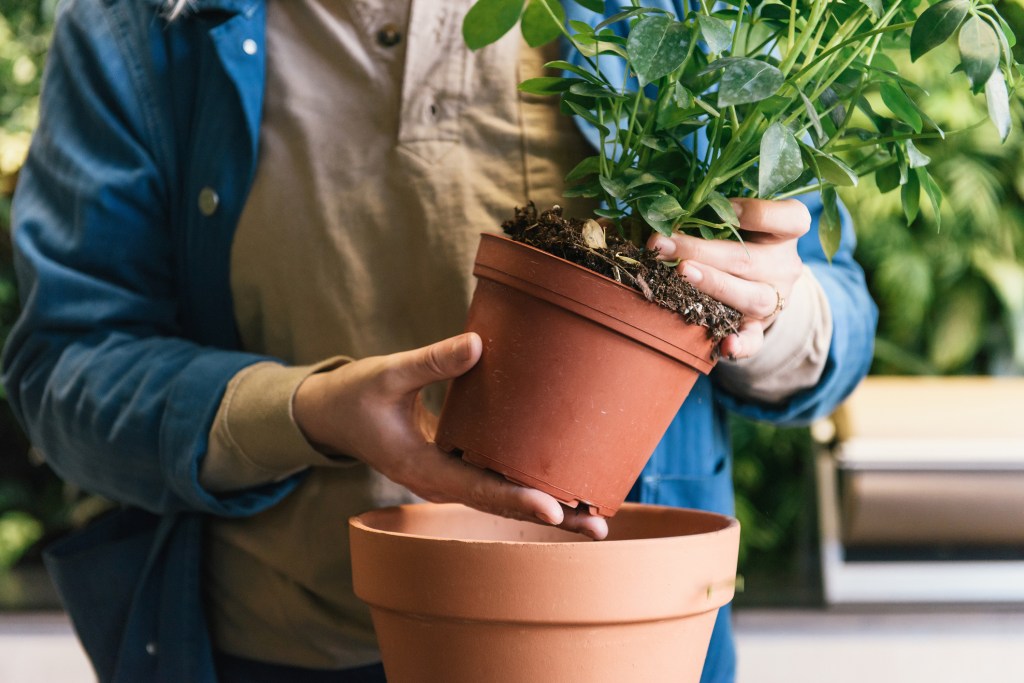When you start your plant journey, one of the names that you’ll likely encounter when you search up YouTube tutorials is Harli G. Harli began uploading videos in 2014 and her content now runs the gamut from top plant lists to plant shopping hauls. Occasionally Harli will post about her family and lifestyle, but her posts typically remain devoted to beginner-friendly houseplant guides. Her style tends to be playful and conversational while still being full of helpful information. Over the years, she’s shared valuable advice on her channel with plant lovers everywhere — ahead, we’ve gathered a few of our favorite lessons from her so far.

How you repot your plant matters more than when you do it.
Repotting is an inevitable part of plant parenthood, granted that you have plants that’re growing. One of Harli’s most popular uploads is a video all about how to repot plants. Harli admits that she often repots her plants when she brings them home — that way, she can check the roots and soil to deal with problems immediately. Her methodology for repotting is pretty straightforward: When filling in a new planter, add a layer of soil at the bottom first, or else the plant may not sit at an appropriate height and the root base may flatten. If your plant is already in good soil, there’s no need to remove too much of it. After situating your plant in its new home, add extra soil to fill the sides.
Transplant shock may occur if you’re overzealous about repotting your plant, but being diligent about inspecting your plant can actually help you give it the best care possible.
You probably have household items that can help you deal with fungus gnats and other pests.
Fungus gnats aren’t usually harmful to your plants, but they can be annoying. Harli covers nine different solutions for handling these pesky pests in this video. After discussing fungus gnat life cycles, she dives into tips for prevention. Her recommendations include bottom watering the plant, allowing the soil to dry, and dressing the top soil with pebbles. Fungus gnats prefer laying their eggs in wet soil and feed on rotting organic material, so keeping your soil dry and free from rot is a critical preventative tip. For homemade solutions, she goes through easy-to-access remedies with household items such as vinegar traps and hydrogen peroxide. Other solutions covered include Mosquito Bits, neem oil, and, of course, yellow sticky traps. Another related video where Harli talks extensively about pest treatment is her video on hydrogen peroxide benefits for plants — in this installation, she goes over how this common household item can help cure common plant issues.
Before rushing to find another plant or an expensive pest solution, look to your cleaning cabinet or pantry first, then apply these preventative tips to keep your recovering plant healthy.
It’s fine for your feelings about your plants to change.
This video is all about plants that Harli regrets buying — perhaps one of the things her audience enjoys most is how honest she keeps her channel! Plant enthusiasts may know the feeling of bringing home a plant and falling out of love with it or finding it too much of a struggle. It’s normal for your feelings about your plants to change as they situate inside of your home (or, on the other hand, completely fail to acclimate to your space). Taking note of which plants you don’t love can help you plan future potential plant splurges. In her video, for example, Harli talks about a variegated ZZ plant and moon shadow hoya — she had reservations about these because they didn’t have the level of variegation she wanted but decided to buy them anyway. In the end, she couldn’t revert these plants back to their variegated states.
The lesson to be learned here is that if you plan to buy a plant that isn’t exactly what you want, proceed with caution.

Propagate plants to help make the mother plant look fuller.
In this video, Harli unpacks the process of propagating her lemon-lime maranta to fill it out. Prayer plants can tend to get leggy, so cutting them back can help them grow back more vigorously. Additionally, you can also stick your cuttings back into the soil, as Harli does here. Prayer plants may seem tricky to take cuttings from, but all you need to do is find where multiple stems grow from one stem. Directly cut underneath the bump and put your cutting in water for the roots to grow. After watering the soil, Harli dug holes in her original plant’s soil and stuck the cuttings in them.
If you find your prayer plant (or really, any other plant) looking sparse, take cuttings of it to encourage bushier growth. Additionally, you can also stick the cuttings into the same planter once they root.
Harli G’s casual yet informative videos have made her one of plant YouTube’s mainstays. Whether you’re seeking out beginner plant care guides or pest prevention tips, you’ll find valuable insight from Harli’s channel. If you’re not looking for any information in particular, you can also leave her plant haul and care routines videos on for a soothing viewing experience!



